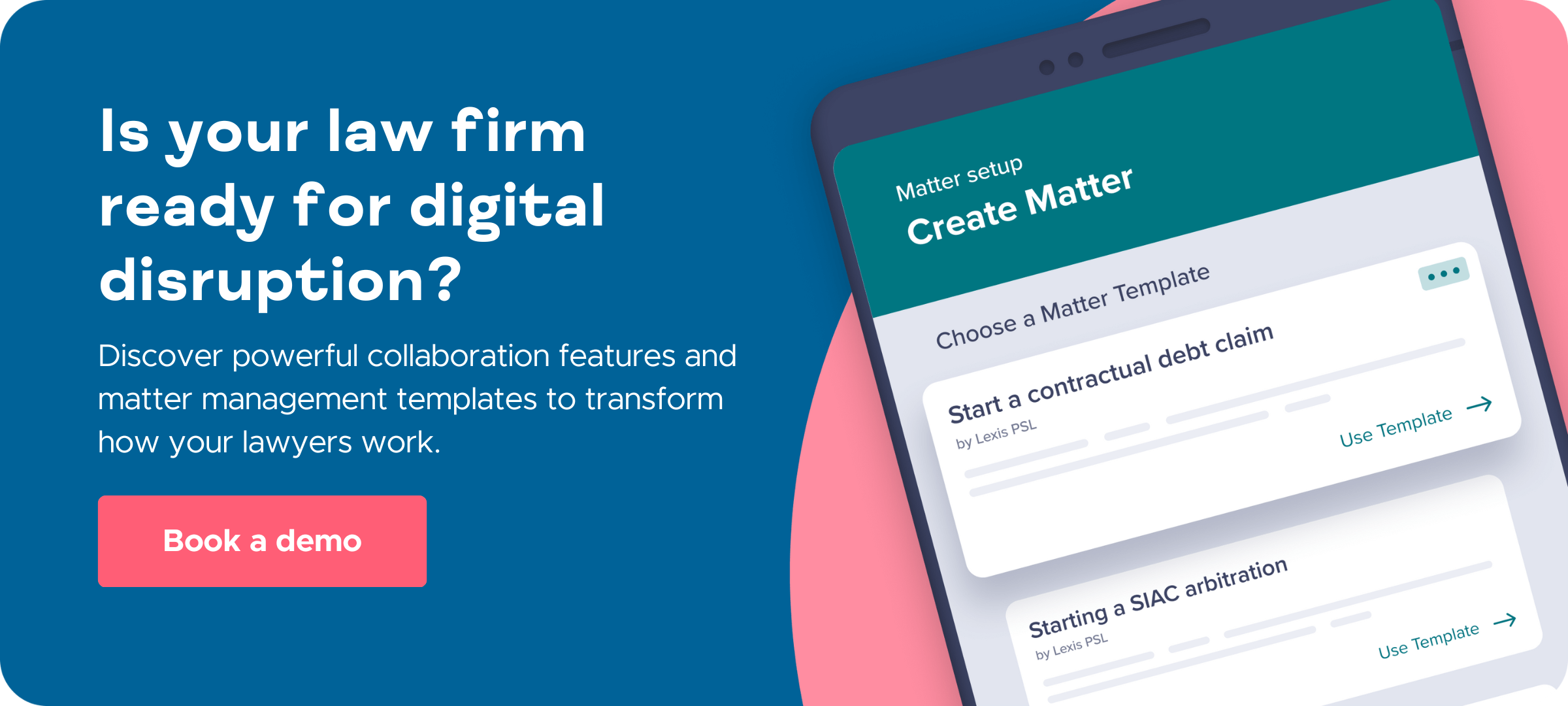UI or AI in Legal Tech? Which One Should Chief Knowledge Officers Invest In?

Artificial intelligence (AI). What was once a futuristic idea is now a present reality, opening up new frontiers for automating and enhancing internal processes. No wonder a recent report highlighted AI and automation as a top legal trend for 2023.1
This comes amid a backdrop of increased investment in legal technology, with law firms increasing their tech spending by over 7% last year, despite an overall trend towards cutting expenses.2
But AI isn’t the only way to build a more streamlined and efficient law firm. There’s another idea that Chief Knowledge Officers (CKOs) should be looking to invest in: an outstanding UI (user interface) and UX (user experience).
In this article, we’ll weigh up the pros and cons of investing in both AI and UI, giving you the info you need to supercharge your legal practice.
Suggested reading: A recent survey found that 60% of lawyers feel dissatisfied with their current tech stack. So, what’s going wrong, and what’s the solution? Read our article to find out: Can Legal Tech Be Trusted in 2023?

AI in legal tech
AI is a machine’s ability to simulate the cognitive functions we typically associate with the human mind — fancy stuff like synthesizing new information, solving problems, and generating ideas.
This technology has been around for a while, but its accessibility and use cases have exploded in the last year. ChatGPT, for example, recently became the fastest-growing technology in history, hitting 100 million active users within two months of its launch. Pretty crazy, right?
Like all other industries, legal is trying to understand how best to leverage the power of AI. Its ability to rapidly source information and answer human prompts makes it a powerful research tool, with just over a quarter (27%) of law firms currently using it for legal research purposes.3
AI is also handy when it comes to automating repetitive, transactional processes. Here are some key examples:
- Task and matter management: AI can generate and send automated reminders or follow-ups throughout projects.
- Client onboarding: AI can automate onboarding workflows, providing a consistently excellent onboarding journey at scale.
- Marketing: From automated lead generation to chatbots, AI can help law firms streamline all sorts of marketing processes.
- Billing: AI can automatically track billable hours and generate accurate invoices.
And this is just scratching the surface. In reality, if there’s a workflow involving repetitive manual tasks, chances are AI can help.
Cons of Investing in AI
AI is a game-changer for the legal industry, but it’s not without its drawbacks. In this section, we’ll counterbalance the hype by looking at some of AI’s current limitations.
It’s still not all that intelligent
AI has come a long way, but the term ‘artificial intelligence’ is still a bit of a misnomer. AI in legal tech is currently more about automation than intelligence – sure it can write up the first draft of an email or marketing post, but it doesn’t have anywhere near the level of expertise or application of knowledge needed to argue cases or draw up proper contracts.
Any platforms promising ‘hyper-intelligence’ should therefore be met with a good deal of skepticism.
Little room for customization
Every law firm or legal department has its own way of working. With this in mind, technology should be flexible enough to adapt to teams rather than the other way around.
For all its wow factor, AI isn’t able to account for the nuances of a specific legal practice, instead being used mostly for ‘general’ processes. This can sometimes make it more of a hindrance than a help.
Slow time to value
Once set up, AI has the potential to simplify your legal work. The problem is that getting to that point can be complicated. That’s because AI is an inherently complex technology requiring a lot of know-how to set up and integrate with your current tech stack.
At the same time, machine learning (ML) algorithms take time to build, train, and deploy. This might put off legal teams looking for a fast ROI.
Not everything can be automated
Yes, repetitive transactional processes are ripe for automation. But beyond that, the legal industry involves all sorts of human processes that AI simply cannot adequately replace.
Would you hire an AI to handle all of your client interactions? Would you use ChatGPT to make legal judgments for you? Not everything can – or should – be automated.
UI in Legal Tech
A UI, or user interface, is the touchpoint where humans interact with digital technology, whether that’s computer software, an app, or an electronic device.
The primary goal of a UI is to provide an outstanding UX — and that means making tech as frictionless as possible. So think fewer clicks, simpler navigation, and user journeys that are slick and seamless.
A good UI brings many benefits to your law firm or legal department, allowing you to:
- Learn and adopt new applications quickly and easily.
- Build more efficient workflows that lay a clear path to completing matters or projects.
- Present information and data more clearly — e.g. matter progression or budget monitoring.
- Make the most of highly customisable legal tech apps.
Cons of Investing in UI
Good UI is an excellent way to remove friction and improve workflows, but it doesn’t necessarily offer the automation capabilities that AI does. That means you’ll still have some of those repetitive manual tasks to handle.
Beyond that, however, there’s not much to report when it comes to UI cons. All the apps and programs you use should have a good UI. It’s the minimum you’d expect from interactions with any tech. Would Apple be so successful if their iPhones weren’t so simple to use?
UI should be a priority for any CKO looking to add new tools to their tech stack.
UI Built for Lawyers
AI definitely has its place in a modern legal tech stack. But despite the current hype, it’s still a nascent technology with a long way to go.
For the time being, CKOs should be prioritizing platforms with outstanding UI and UX. After all, what matters to the success of a law firm is how team members collaborate with each and their clients, not how well they collaborate with a machine.
By investing in technology that facilitates human collaboration through a slick and intuitive UI, you transform your law firm’s productivity while ensuring better outcomes for your clients.
In other words, you need Lupl: a legal project management platform built for lawyers. With Lupl, you can:
- Gain a complete view of your tasks and project statuses via our intuitive dashboard.
- Connect your existing tech stack — including WhatsApp, Office, and Google Drive — in one central hub.
- Collaborate seamlessly with colleagues and clients.
- Access what you need on any device or browser.
The story around AI and how it can impact the legal world will continue to unfold. At some point, all legal CKOs will need to look at how they can fit AI tools into their tech stack.
And when that time comes, they must ask themselves an important question: How good is the UI?
Interested in finding out more about Lupl’s amazing UI? Well, seeing is believing. Book a demo today and experience it for yourself.

More legal tech insights we think you'll love

Q2 2024 Product Update – New Features & Improvement
Lupl is the leading task and project management solution for...

How a team of trainee lawyers streamlined work handovers with Lupl
CMS trainees adopt Lupl's task management tools to enhance work...

